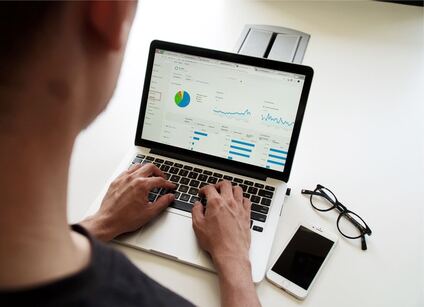|
We are a tech savvy nation. In less than a decade, it is amazing to realise that we all carry around a mini computer in our pockets and at a quick glance at your watch, it can tell you within seconds how many steps you’ve taken, how far you’ve walked, the status of your heart rate and how well you slept last night. This data helps individuals and health professionals to understand how a person functions, and the factors that may be helping - or hindering their health and wellbeing. As a dietitian, much of my role is mostly about exploring and understanding someone’s dietary intake, analysing what nutrients are being met and what potential risks might be on the horizon based on unbalanced or inadequate eating patterns. Although it’s one thing to talk and prescribe nutrition, it’s another thing to teach someone what happens when we eat food, and the impact this has on their own body. This is where I have experienced and seen the value of Continuous Glucose Monitoring (CGM). Although CGM devices are primarily designed and used by people with Type 1 Diabetes, I have used them with healthy fit individuals, as well as people with Type 2 Diabetes, (especially when the national guidelines changed in 2014 to cease self blood glucose monitoring for those not on insulin).
CGM devices provide a wonderful insight into a person’s week of blood glucose levels (BGL), based on their daily activities and eating habits. I have used the Medtronic Guardian Connect which relays real-time data to the individual’s phone, and other options such as the Libre Freestyle also have similar technology. Instead of the individual investing in a device, I provide it as a week-long window of data collection and a chance for my clients to really understand how their food choices impact their bodily systems. The ability to see this instant feedback puts their health and nutrition front of centre and provides a unique opportunity to discuss what happened in a course of 6-14 days. The blood glucose level graph, alongside a food diary allows them to connect the dots when they see when they have eaten in excess or too frequently or too late at night. It also helps to educate people about the effects of glycaemic index of carbohydrates, combinations of macronutrients in a meal (high fibre vs high fat vs high carb) and food cravings based on declining BGLs or timing of meals. For those with insulin resistance, it’s an opportunity to see just how much (and how hard) the body has to work to process their food to return to homeostasis. Fit, healthy individuals also gain insight into the mechanisms of their own body and understand in a tangible way the daily fluctuations and outcomes of food, exercise, sleep and stress has on their health. It’s important to highlight that CGM devices are not for everyone; it is a relatively complex feedback system that requires some base level of health knowledge. It also needs to be noted that viewing BGLs alone is only one part of the story, and measuring insulin levels in parallel would be ultimately provide an even clearer picture of someone’s hormone regulation. I guess we will have to wait and see. But for now, I hope that CGM will become more accessible (and perhaps more affordable) over time as it undoubtedly provides health professionals the invaluable access into a person’s lifestyle habits at home as well as the ability for individuals to grasp a concept that otherwise would be completely foreign to them. Article written by Carla Johnson Dietitian at The Nutrition Circle For more information on The Nutrition Circle, click here Disclaimer: This text does not serve as medical advice or an endorsement of a particular product but serves as an example of how technology can improve healthcare. If you have any questions, seek advice from your doctor.
1 Comment
Your comment will be posted after it is approved.
Leave a Reply. |
AuthorContributors Archives
March 2020
Categories
All
|
|
SOCIAL
|
HealthAide is an independent resource. We do not own shares or make profits from the products listed on this site. Products and services have been curated using the Four Principles of Healthcare Ethics (Beauchamp, T. and Childress, J. (1985) Principles of Biomedical Ethics)
© COPYRIGHT 2018. ALL RIGHTS RESERVED.



 RSS Feed
RSS Feed